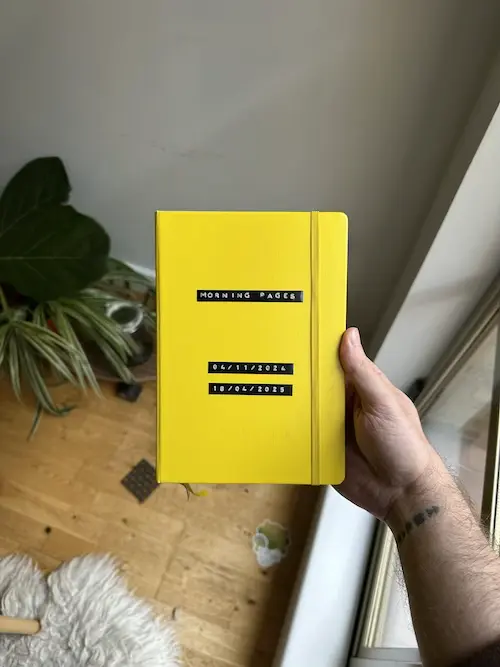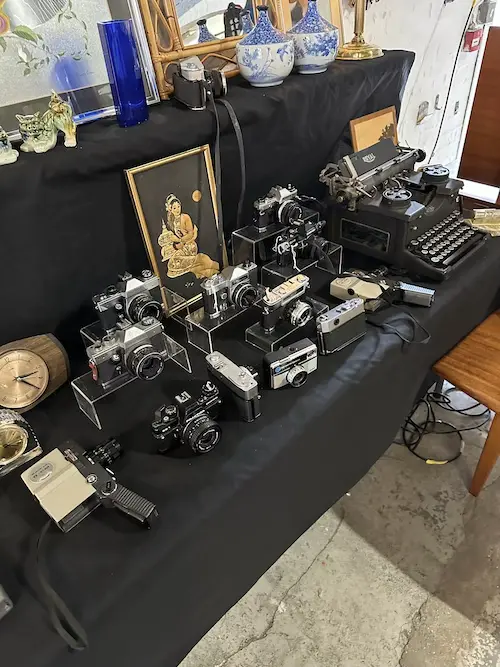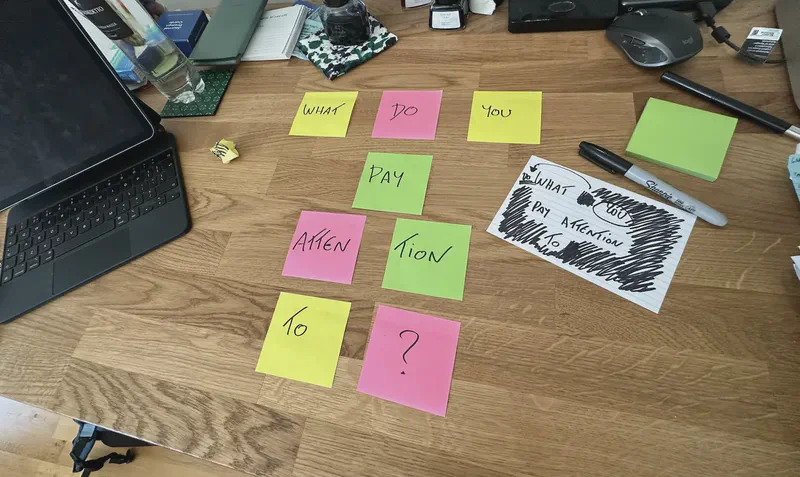In his book “Keep Going”, Austin Kleon said: “Pay attention to what you pay attention to”.
My phone’s camera roll is filled with screenshots and photos of random stuff. Things I want to remember, explore later, or just find interesting: books I might want to read one day, quotes, future events or conferences, artists I want to check out…
Then I completely forget I took those snapshots. They stay there on my phone, like some time capsule of what tingled my curiosity, and I eventually rediscover them several months later (if ever!).
Recently, I’ve compared the last few blog posts I wrote and those things I stashed for later. In hindsight, I realised that my inspiration comes from the stuff I pay attention to, in my every day life. Blog posts, YouTube videos, they’re made of those things I noticed, and sometimes obsessed over.
So, I’ve decided to go back through my camera roll and document what I decided to save, in the past couple of months. It feels a bit like a scene in a TV show where a detective is linking evidence to a suspect using pieces of red string and pins! I’d like to share some of them here:
- Making stuff with your hands is therapeutic. I had so much fun hand-drawing a birthday card for one of my friends! I’ve also been obsessing over building stuff out of pallet wood, and been feeling inspired by Van Neistat’s work, his cinematography and storytelling as well as his builds.

-
I’ve been fascinated by free, community maintained book exchange shelves. I found one in Portslade station near Brighton, and one in Brussels called Point Stalingrad. Reading remains one of the key ways I learn and grow, as an adult.
-
Daniel Terhorst-North said: “The whole point of being a software developer is to solve problems you need software for. The less software you can do this with, the better. If you can solve the problem, say, by talking to people, or getting people to talk to each other, then you win at software”. This makes me think how sometimes we jump to engineering something complicated before we ask ourselves “why are we doing this, actually?”. The right conversation can save you days, weeks of work! (I like the talk Daniel gave at GOTO Amsterdam in 2024, “The Best Programmer I know”)
-
I finished another Morning Pages Notebook - Julia Cameron’s practise of sitting down to write down 3 pages of pure stream of consciousness every morning. I believe journaling is one of the best way for me to figure out what I pay attention to.

-
In his book “Show Your Work!”, Austin Kleon tells us we shouldn’t feel guilty of liking something. As Dave Grohl said, “I don’t believe in guilty pleasures. If you f---ing like something, like it”.
-
When browsing at a bookshop, I take photos of book covers - ones I want to research later, ones that I think might be interesting, and ones that I just like the cover of! I’m then able to go through them later by searching for “books” in my camera roll app on my phone. A few covers I snapped recently: Source Code: My Beginnings by Bill Gates, and Brief Answers to the Big Questions by Stephen Hawking.
-
I saw on Threads.net some people discuss using standalone objects that perform one function, instead of their phone, as a way to avoid distractions. This resonated with me; I’ve been using a physical timer, notebooks and fountain pens, a film camera and even my old calculator from school (a Casio fx-92 College New +!) for that exact reason. Later in May, I accidentally ran into a vintage flea market in Bermondsey, and it reminded me of this. I was tempted to get myself (another) vintage film camera or a Royal typewriter. It was a good reminder of why these tools seem to be making a comeback.

-
I discovered Anna Steffey, a photographer who makes beautifully melancholic cinematic videos. They usually are short scenes without any talking, with a musical background (see “mystery of love”, “a life worth living”). She’s a great example of someone who just makes stuff. Inspiring!
-
For synthesiser and data nerds: Knarf shared in a recent Les Sondiers livestream a dataset with every synth, drum machine and sampler released between 1896 and 2024. It contains things like brand, type of device and synthesis, form factor, polyphony, oscillators, number of keys and how many years it was produced for, to name a few. A goldmine, for people who like stats! You can find it on GitHub. Have fun playing with the data!
That was an interesting exercise. I’d like to do this more often. Looking back at what made me curious recently, I can really see how my inspiration works. It has nothing to do with being struck by lightning (aka the lone genius myth), and everything to do with what I pay attention to.
If someone asked you “what have you been paying attention to, recently?”, do you know what you would answer?
